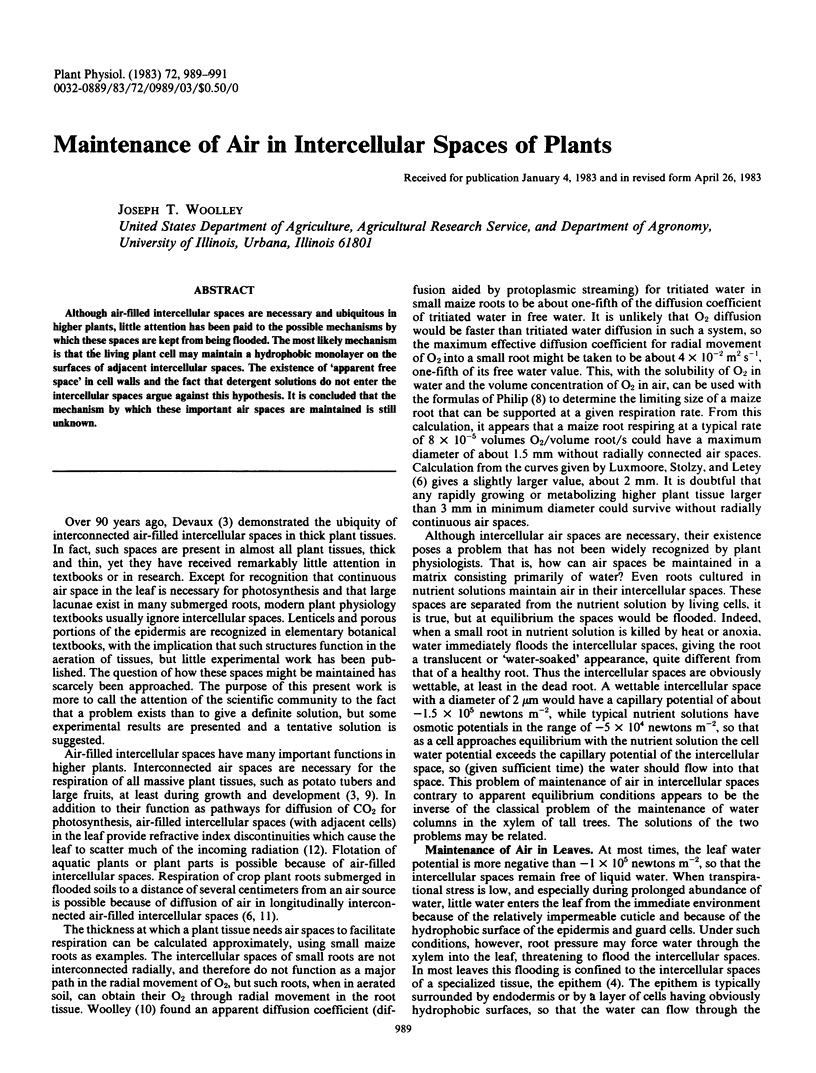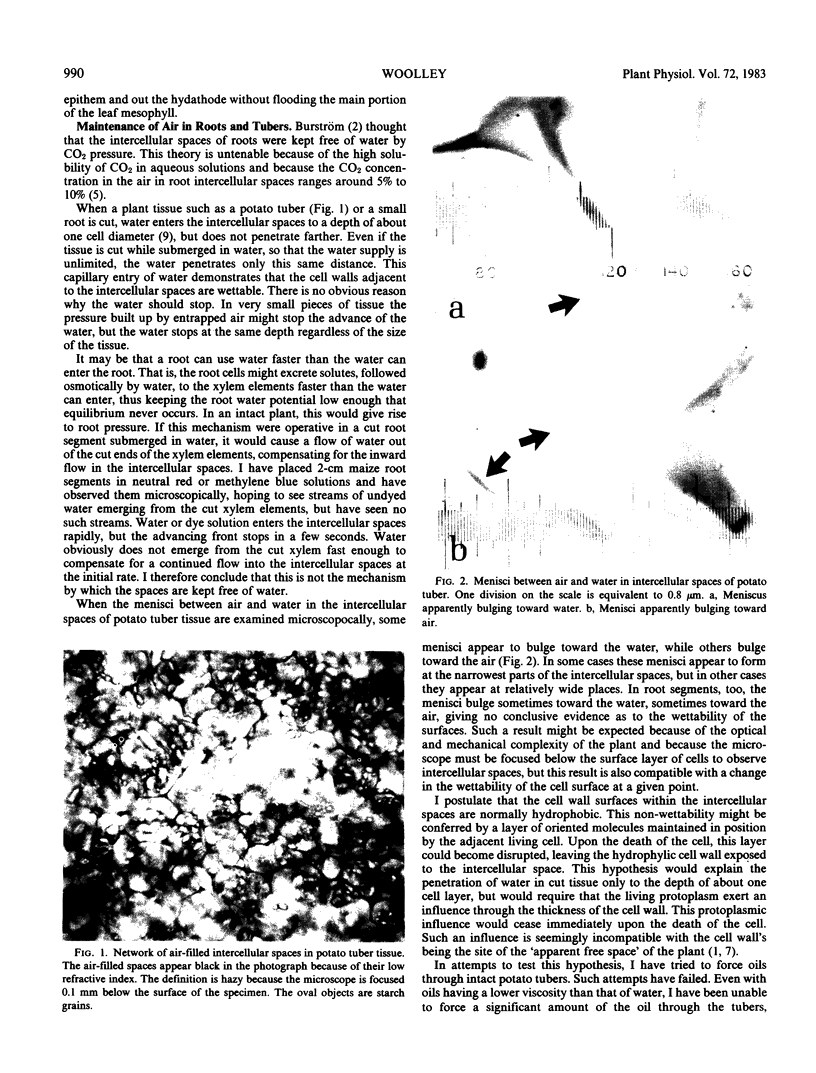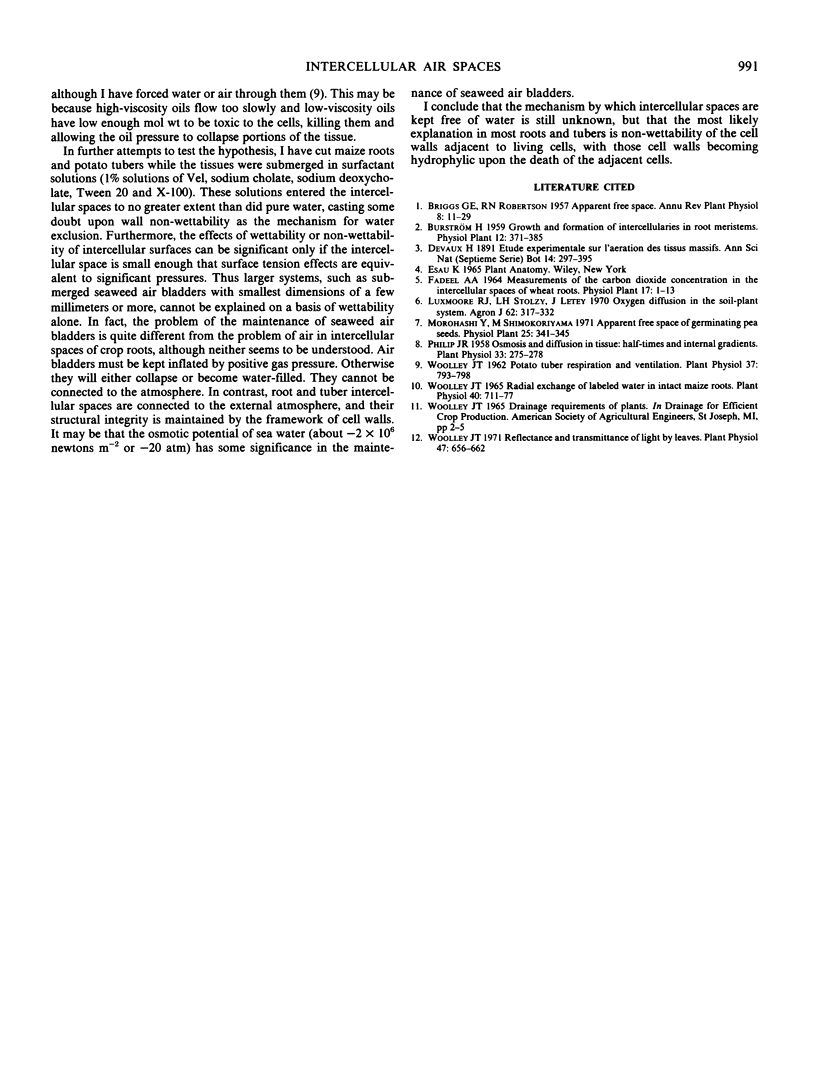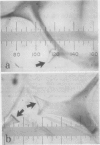Abstract
Although air-filled intercellular spaces are necessary and ubiquitous in higher plants, little attention has been paid to the possible mechanisms by which these spaces are kept from being flooded. The most likely mechanism is that the living plant cell may maintain a hydrophobic monolayer on the surfaces of adjacent intercellular spaces. The existence of `apparent free space' in cell walls and the fact that detergent solutions do not enter the intercellular spaces argue against this hypothesis. It is concluded that the mechanism by which these important air spaces are maintained is still unknown.
Full text
PDF


Images in this article
Selected References
These references are in PubMed. This may not be the complete list of references from this article.
- Philip J. R. Osmosis and Diffusion in Tissue: Half-times and Internal Gradients. Plant Physiol. 1958 Jul;33(4):275–278. doi: 10.1104/pp.33.4.275. [DOI] [PMC free article] [PubMed] [Google Scholar]
- Woolley J. T. Potato tuber tissue respiration & ventilation. Plant Physiol. 1962 Nov;37(6):793–798. doi: 10.1104/pp.37.6.793. [DOI] [PMC free article] [PubMed] [Google Scholar]
- Woolley J. T. Radial Exchange of Labeled Water in Intact Maize Roots. Plant Physiol. 1965 Jul;40(4):711–717. doi: 10.1104/pp.40.4.711. [DOI] [PMC free article] [PubMed] [Google Scholar]
- Woolley J. T. Reflectance and transmittance of light by leaves. Plant Physiol. 1971 May;47(5):656–662. doi: 10.1104/pp.47.5.656. [DOI] [PMC free article] [PubMed] [Google Scholar]




